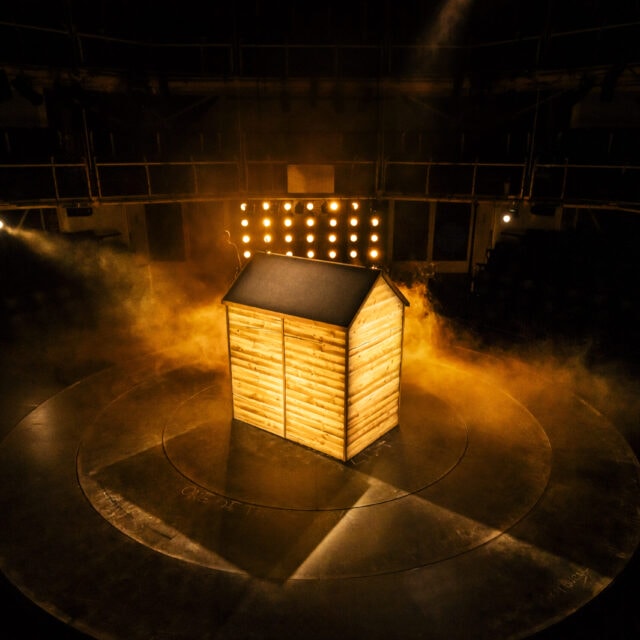What does a victim of Domestic Abuse look like to you?
Allie Crewe is the recipient of the Portrait of Britain 2019 and 2023 by the British Journal of Photography, and she has been commissioned twice by Arts Council England for her recent portraits.
The Royal Exchange Theatre has brought this series of photos as part of the exploration of themes within SHED: EXPLODED VIEW. The play explores violence, love and loss in society, with a particularly close focus on how these themes play out in romantic relationships across generations.
So, we sat down with Allie to discuss the portraits and her inspiration behind them.
Where did the idea for this project come from?
“I grew up with violence in the home. So I made the images from a personal place. I did call-outs on LinkedIn and many women and a few men wanted to challenge the narratives surrounding domestic abuse.
I made about 50 portraits all over the UK. SafeLives asked me to become their artist in residence and then SICK! Festival commissioned the work to exhibit. So I knew others believed in my ideas and I had the privilege of belonging to teams of awesome people.
In all it took two years from research to completion.”
Why did you name this exhibition ‘I Am’?
“When a person leaves a violent relationship they have often lost their core sense of identity. We are not always aware that we are survivors of abuse. At the time coercive control, physical, sexual, financial abuse can feel normalised.
We have to let go of so many beliefs and begin a new life. That takes courage. So I Am…? Well it means to take that leap of faith and define ourselves, we have to learn who we are and who we want to become.”
What was your process when taking these people’s portraits?
“I shoot on film in natural light and travel to the participant so they are in a safe space.
We talk and it is important to deconstruct the photographer as a powerful person and level the relationship. We both share, we are both vulnerable and all emotions are welcome. I never rush. The camera is an invitation. The participant chooses what to bring to the frame, not me.
Afterwards we stay in touch, many write down what they want to say and I include this in the project.”
What did you learn from this project?
“I need a tribe to share visual stories and learn from these people.
This was very therapeutic for me and many said it was life changing for them. The work hung, Queen Camilla opened the initial exhibition and the national media covered it. We had cast off shame and guilt and we were redefining violence in the home.
At the end I was a tad exhausted so I’m making new work quietly about the healing process which exhibits in June.”
How can art be an agent of change?
“It opens different conversations.
When I offer to witness something raw it comes across in the portraits. People were getting in touch to say they were talking about their experiences for the first time, discussing it in the workplace, asking how they can join the campaign to make a difference.
Art is an emotional language and that allows us to explore ideas more openly.
These women, hanging in The Royal Exchange Theatre are powerful, we went big because women should take up space.”
